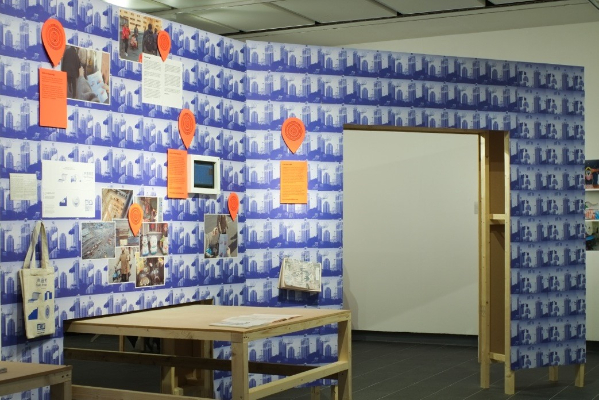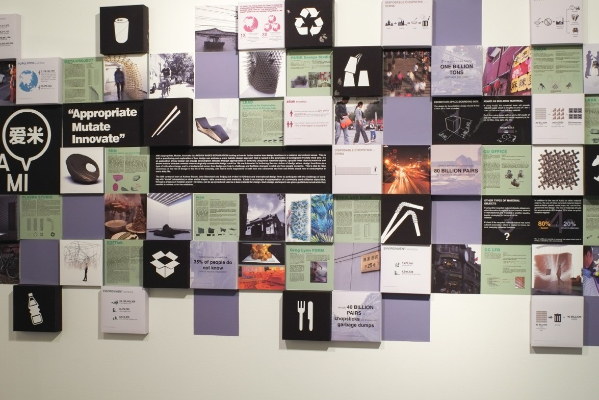MAKING COMMUNITY, NOT THE MAP NOR THE TERRITORY
Beijing ‘Design-in-Progress’
Curated by Beatrice LeanzaCentre for Contempoary Chinese Art – Manchester April 3 – June 3, 2014
Making Community showcases a selection of ongoing initiatives rendering a generative grammar of creative engagement with the spatial and social context of the Chinese capital.
This relational archipelago of interdisciplinary design practices is both premise and product of an evolving cultural predicament formulated by the mutually defining changes along the design-and-community nexus in the contemporary urban realm. Radically collaborative and open-ended, they are inherently shaped as metaphorical constructs of ‘speech and duration’ that reflect on the urgency for localized forms of intellectual and practical connectivity to amplify and enable solutions in the contested spaces of the city, for and with its constituencies. The exhibition is therefore not conceived as a static display of finished products, but as an ‘architecture of relationships’ informed by urban research and social agency engaged in the rethinking of existing topographies of knowledge production, and the creation of instruments for its dissemination.
A selection presented for the first time in an international context and originally featured during Beijing Design Week 2013, Making Community offers itself as a dynamic archive and a participatory device to open a conversational space around: design and cultural heritage, architectural preservation and urban revitalization, sustainability, up-cycling and environmental consumption, digital and artisanal fabrication, interactive and social design.The creative outputs range in open-source research platforms for urban innovation, digital and print publications, books, experiential apps, identity and branding, product co-design, documentaries and experimental videos, among others. Taken here as a case-study, BJDW plays out as a resounding system of creative communities, where territoriality and collectivity are continuous with its molecular formation as co-creation. It aims at forging a force field that can augment and expand professional perspectives into institutional agendas and public debate, to devise the tools and the awareness for ‘process’ to truly be emplaced as productive exchange on the micro-scale. As one of the core projects developing within BJDW urban ecology, the Dashilar Pilot project is here employed as a narrative dispositive of concrete solutions implemented through transcultural and cross-disciplinary interactions. Launched with the BJDW 2013 edition in close cooperation with the Dashilar Culture Investment, a governmental developer, it is an international call for ideas responsive to Dashilar historical area of densely populated alleys (hutongs), its aging infrastructure and endangered architectural and social landscape. An abridged presentation of resulting proposals serves here to contextualize the complexity of ‘transformation’ – a form of collective thinking involving the making of professional and social communities wired to institutional networking – as opposed to the complacency in political agendas of ‘change’. Textual and visual narratives caption each project with information about their initiators and contributors; relevant links to online platforms are provided for audiences to start forming an understanding of a Beijing-bound design landscape and part-take in an ever growing laboratory for innovation and self-engagement.
The exhibition set up and visual design are the work of SANS, a Beijing-based studio made of Neill Gaddes and Yijing Xu, who’s been involved in the development of the Dashilar Project since its inception, and contributed heavily in making the Dashilar Pilot series possible.
Participants and Projects:
Participants names refer to those of initiators, many of these projects are the result of multiple contributions which are credited in the documentation provided on site of the show.
A.M.I. (Appropriate, Mutate, Innovate), Audio Archecology & Concrete Flux (Tom Baxter and Solveig Suess), CYJO, Dashilar Pilot series: [Hutong Toilets (Michael Young), Pop-Up Canopy (Peoples Architecture Office), 2 Yangmeizhu (reMIX studio), Fringe Density (Urbanus), Rabbit Grandpa Zhan (metaLINGO), Modul’Hutong (Matali Crasset), Micro-Hutong (standardarchitecture studio), The Museum of Bicycle Parts (CAFA Visual Communication dpt), Scagnel (Luca Nichetto)], Design For the Real China, Hutopolis (Gianantonio Bongiorno, Eugenia Murialdo, Luis Aguirre Manso), Interactive Beijing (Fei Jun and Lulu Li), LAVA Design Studio, Meta-Hutong (Andy Bryant and Wang Shuo), MovingCities (Bert de Muynck and Mónica Carriço), SANS (Neill Gaddes and Yijing Xu), The Other Place, Wai Architecture Think Tank (Nathalie Frankowski and Cruz Garcia), Sander Wassink.
A selection of publication and books presented within the show will be also available at the CFCCA store: Concrete Flux magazine, LAVA Mobile Design Agency Newspaper, Hutopolis book, Abitare China HUTONG, special summer issue 2013, Pure Hardcore Icons publication.










